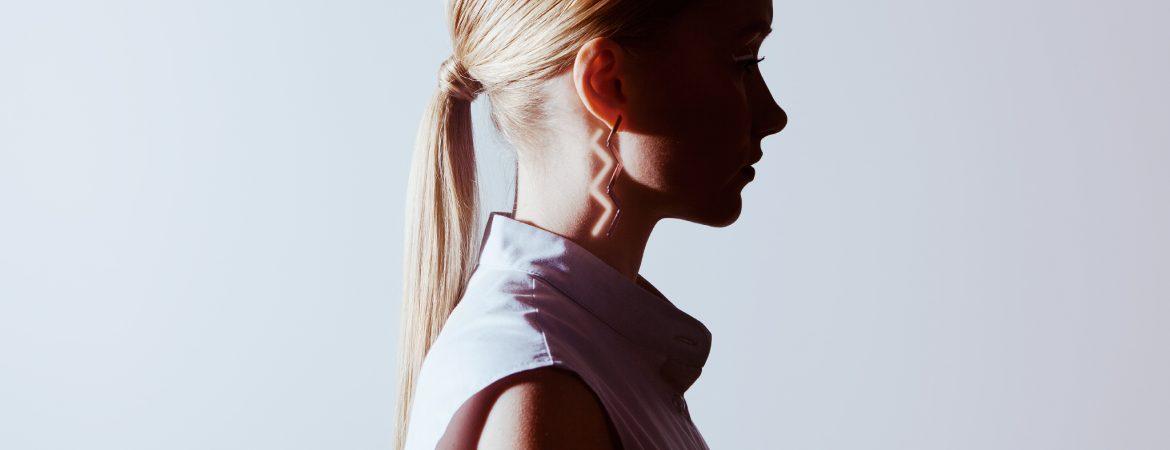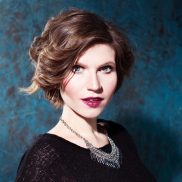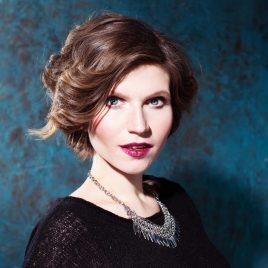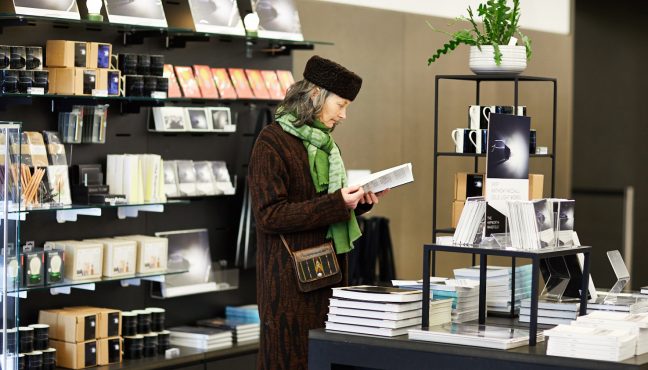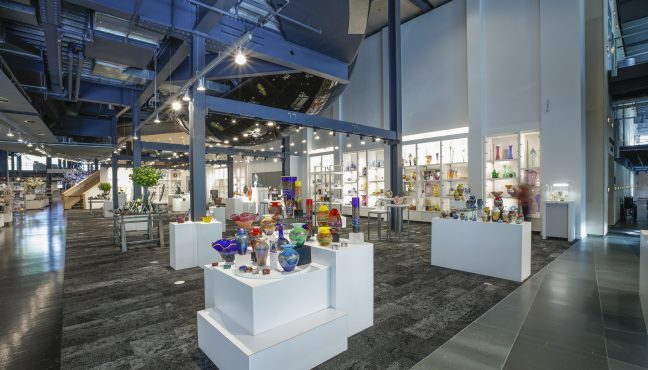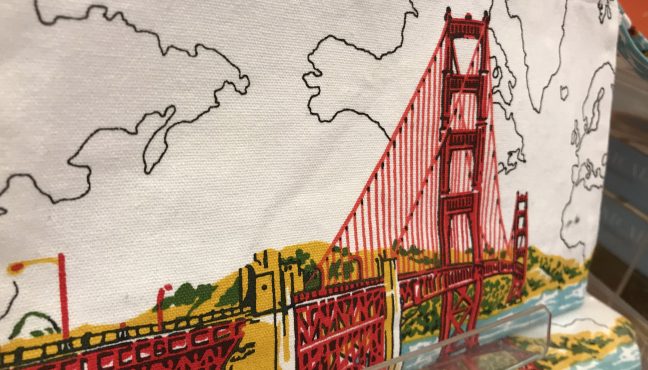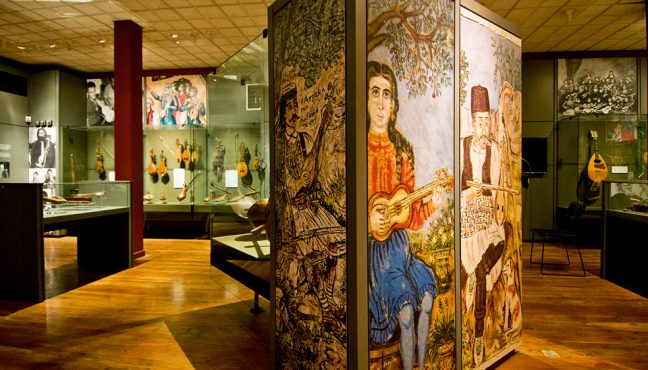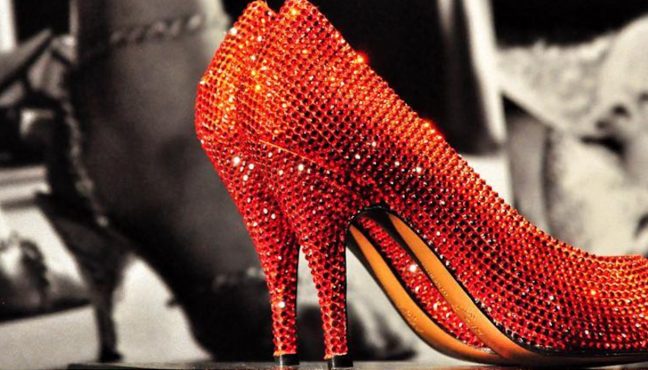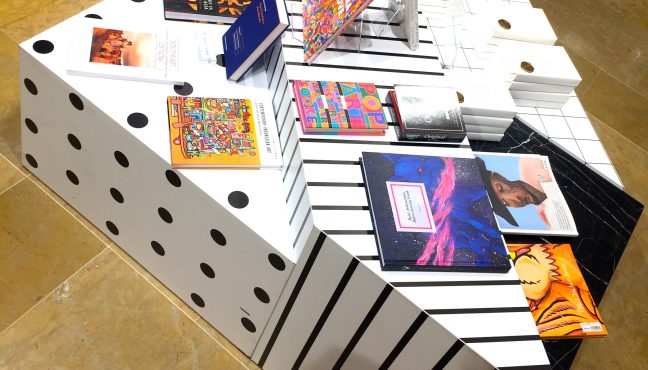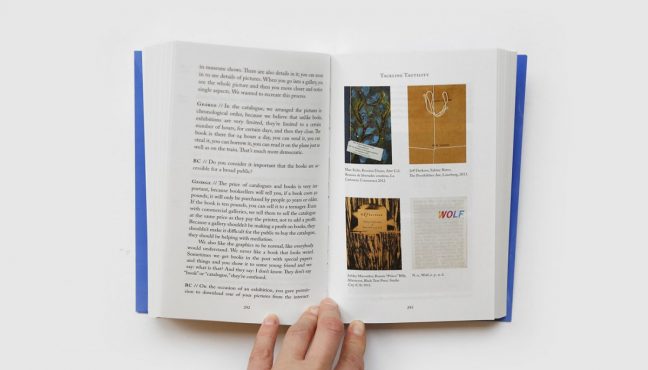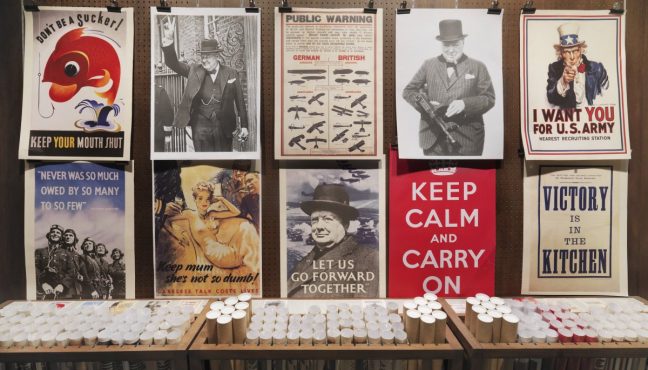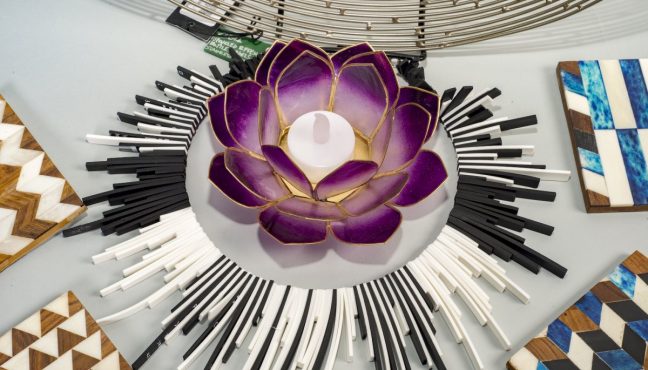When an entire city is a museum, prepare to see things beyond obligatory museum memorabilia in its gift shops. Anastasiia Kandoba and Maria Churkina – the designer duo behind Chu Ka Brand – create extraordinary accessories, inspired by constructivist architecture of their hometown. The designers of “the buildings you can wear” recreate Ekaterinburg’s iconic constructivist masterpieces like the Iset hotel, White Tower and Dinamo stadium. Read on to discover how Chu Ka Brand accessories disrupted Ekaterinburg’s souvenir industry, brought glamour to the 3rd Ural Industrial Biennial of Contemporary Art and ended up on Ian Mckellen’s finger.

1) You both grew up in Ekaterinburg. Apart from being the world’s biggest open-air museum of constructivism, the city has a grandiose industrial heritage and incredible nature around it. Why do you think it was the architecture that inspired you?
Maria: I got this idea of constructivism-inspired accessories while studying in London. There was this class, where they taught us to look for new ideas in art and things around us, do research and use visual imagery. Even though I was living in London, which is an inspiration in its own right, in my work I wanted to tell a story of my home-town. Everyday people in Ekaterinburg walk by constructivist masterpieces, just like Londoners pass the Houses of Parliament and Buckingham Palace. The sad thing is there are no crowds of tourists snapping photos of Ekaterinburg’s Iset Hotel and White Tower, and some of those historic buildings are terribly dilapidated.


1) Is there anything particularly challenging about the process of making “buildings that you can wear”?
Anastasiia: Jewelry Illustrator Valeria Pavlyuk and CAD specialist Ksenia Smetanina helped us build a prototype. As for production, we’ve passed through several phases: from 3D printing to laser metal cutting. The production process is complicated, because all items are cut out of steel in manufactures. Laser cutter leaves melted edges and scratches on metal, so usually accessories require a final touch at a jewelry workshop. Steel is harder to work with than silver, but it is more durable. When we only began experimenting with materials, I polished steel jewelry myself with a buffer at home. My boyfriend thought it was hilarious: me - working on a piece with a very loud jewelry polisher in ripped jeans, protective glasses and a face mask. But for me it was very important to have a first-hand experience. Now I know the process inside out and I’m not scared of production complexity - I can organize a complex manufacturing process that involves different workshops and get the desired result.
1) How did your collaboration with the NCCA-Ekaterinburg begin?
Anastasiia: At first, my collaboration with the NCCA-Ekaterinburg didn’t have anything to do with the jewelry. I’m on the team of the Ural Industrial Biennial. I had been looking for some truly outstanding gift ideas - not just obligatory bags and mugs, but couldn't think of anything. It was the summer of 2015. Masha had just come back from London and the Iset Hotel (the sickle-shaped constructivist masterpiece and a cultural heritage site) was the main venue of the 3rd Ural Industrial Biennial. Masha shared her thoughts on these “building accessories” and suggested we should make them together. That’s when all the pieces fell into place: the Biennial, the Iset necklace and my work for NCCA. In a little while we launched our first collection from scratch and it went surprisingly well.


1) After the Biennial did you have a feeling that you’d “woken up famous?”
Maria: I can’t say we woke up famous, but we were pleasantly surprised by all the attention from Russia’s leading. The best thing was that the locals loved the idea and were eagerly buying our jewelry: both for themselves and as souvenirs from the Urals. I personally know men who had never worn any rings, but for the last two years basically haven’t taken off their white tower rings. I had a suspicion they’d put it on for our meetings.
1) Do you like museums? Are there any favorites in Russia or abroad?
Maria: When in Moscow, I usually go to МоМА in Ostozhenka street, in Ekaterinburg I love the art gallery of Yeltsin Center. While living in London I loved roaming around the National Gallery, there are no lines and the entry is free, so you can just drop by whenever you have a spare half hour. Anastasiia: I try to travel as much as possible and mostly around Europe. In every city I try to visit both classic must-see museums and small quirky galleries. Whenever I go to Paris, my friend Katya who lives there and shows me something I’d never find on my own. The most memorable museum experience was at the restoration laboratory of the Palais Galliera. This fashion museum was closed for reconstruction for a while and I was among the lucky ones who’d been invited to an exclusive gallery tour. I witnessed the process of textile restoration – remember those whimsically fine instruments and lab-workers in snow white gloves. They showed us around cool dimly-lit storerooms which house clothes of Marie-Antoinette, Napoleon and Audrey Hepburn. I wish there were more museums in Ekaterinburg. Sure, we have the Yeltsin Center and NCCA, where I haven’t missed a single exhibition opening. I spend a lot of time at NCCA-Ekaterinburg and appreciate every moment I can spend in its exhibition hall. A little while ago the was a showcase of Rodchenko photography and I would go there to recuperate and meditate over the images.

1) Is there a particular museum shop that you love?
Maria: Of course, for me it’s a gift shop at Tate Modern, I feel like staying there forever. I think people who work there are the happiest in the world. Anastasiia: I can’t say I have one, but I never leave a museum without stopping by a gift shop. I loved the merchandise at the Venice Biennale of Architectural. Also, recently I discovered a great store in Warsaw with books and paper models of buildings.


1) How do you feel about your accessories being sold at art-venues?
Maria: When you're a designer and sell your work in stores and boutiques – this feels great, but when people buy your accessories at art-venues, it makes you feel like an artist.
1) Among the owners of your jewelry are celebrities like actor Ian McKellen, actress and director Renata Litvinova and former editor of Russian Vogue, Aliona Doletskaya. Who else would you like to see wearing your accessories?
Maria: Julia Roberts and Jackie Chan – just kidding. It’s not like we had it planned – all these wonderful people got our accessories by chance. We never thought how to make Renata Litvinova buy our bracelet, it just happened, and we want things to stay that way. After all, the universe chooses amazing owners for our accessories.


1) Are you planning to continue working with museums and art spaces?
Maria: We are. In fact, right now we’re working on another great project, but I prefer to keep it a secret until everything’s final.
